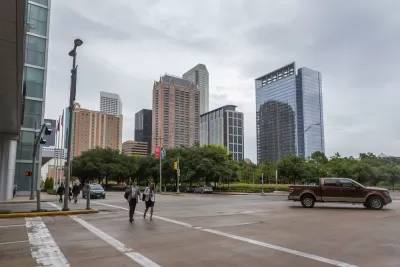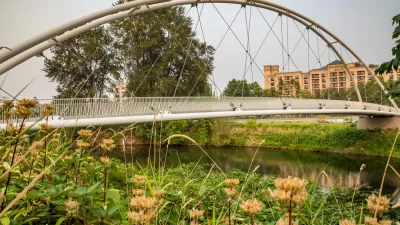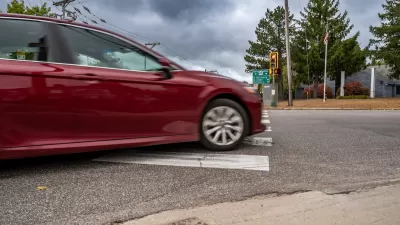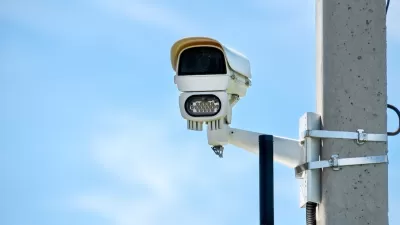The city's roadways were built to prioritize fast-moving traffic, not safety. With a new Vision Zero plan, that could change.

Why does Houston have so many pedestrian deaths? "[A]ccording to Houston’s chief transportation planner, David Fields, it’s because Houston roadways weren’t built primarily to protect pedestrians," reports Kirkland An. "'Historically, Houston has built its transportation to move people fast,' Fields said. 'And what that means is, we have not prioritized safety.'" Based on data from the city, "60% of traffic deaths and serious injuries occur on only 6% of its roads."
"Last year, Houston Mayor Sylvester Turner announced a Vision Zero plan: to reduce all traffic deaths—including pedestrian deaths—to zero by 2030," joining over 40 other cities that have taken a similar Vision Zero pledge. The plan "includes a citywide campaign on street safety, designing streets to support safer speeds and constructing sidewalks and bicycle facilities." In addition to speed limits and new safety infrastructure, "[t]he city also considers planning elements like 'corner radius, the width of the street, the width of each lane, and where you put parking,'" Fields told the Houston Chronicle.
Like in other cities around the country, "[t]hose affected [in Houston] were more likely to be part of low-income and minority communities." According to Fields, "[t]his tells us we have not invested equitably in safe transportation across the city." While the Vision Zero plan may seem ambitious for such a car-centric city, he says, "every life saved on the path to zero is valuable."
FULL STORY: Why are Houston's roads so dangerous and unwalkable? We prioritized driving fast.

Manufactured Crisis: Losing the Nation’s Largest Source of Unsubsidized Affordable Housing
Manufactured housing communities have long been an affordable housing option for millions of people living in the U.S., but that affordability is disappearing rapidly. How did we get here?

Americans May Be Stuck — But Why?
Americans are moving a lot less than they once did, and that is a problem. While Yoni Applebaum, in his highly-publicized article Stuck, gets the reasons badly wrong, it's still important to ask: why are we moving so much less than before?

Using Old Oil and Gas Wells for Green Energy Storage
Penn State researchers have found that repurposing abandoned oil and gas wells for geothermal-assisted compressed-air energy storage can boost efficiency, reduce environmental risks, and support clean energy and job transitions.

Updating LA’s Tree Rules Could Bring More Shade to Underserved Neighborhoods
A new USC study finds that relaxing Los Angeles’ outdated tree planting guidelines could significantly expand urban tree canopy and reduce shade disparities in lower-income neighborhoods, though infrastructure investments are also needed.

California's Canal Solar Projects Aim to Conserve Resources and Expand Clean Energy
California’s Project Nexus has begun generating electricity from solar panels installed over irrigation canals, with researchers and state agencies exploring statewide expansion to conserve water and boost clean energy production.

HHS Staff Cuts Gut Energy Assistance Program
The full staff of a federal program that distributes heating and cooling assistance for low-income families was laid off, jeopardizing the program’s operations.
Urban Design for Planners 1: Software Tools
This six-course series explores essential urban design concepts using open source software and equips planners with the tools they need to participate fully in the urban design process.
Planning for Universal Design
Learn the tools for implementing Universal Design in planning regulations.
Heyer Gruel & Associates PA
City of Moreno Valley
Institute for Housing and Urban Development Studies (IHS)
City of Grandview
Harvard GSD Executive Education
Salt Lake City
NYU Wagner Graduate School of Public Service
City of Cambridge, Maryland





























